Springboot整合RabbitMq
专注写bug 人气:0什么是TTL?
在RabbitMq中,存在一种高级特性 TTL。
TTL即Time To Live的缩写,含义为存活时间或者过期时间。即:
设定消息在队列中存活的时间。
当指定时间内,消息依旧未被消费,则由队列自动将其删除。
如何设置TTL?
既然涉及到设定消息的存活时间,在RabbitMq中,存在两种设置方式:
- 设置整个队列的过期时间。
- 设置单个消息的过期时间。
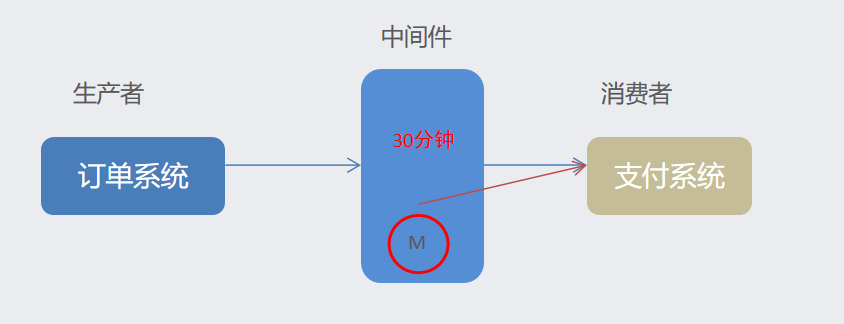
设定整个队列的过期时间
按照上一篇文章的依赖导入和配置编写方式进行。
配置类编写
在原有基础之上,新创建几个配置的bean类,申明bean对象,并进行交换机与队列的关联,如下所示:、
package cn.linkpower.config;
import org.springframework.amqp.core.*;
import org.springframework.beans.factory.annotation.Qualifier;
import org.springframework.context.annotation.Bean;
import org.springframework.context.annotation.Configuration;
import java.util.HashMap;
import java.util.Map;
@Configuration
public class MQConfiguration {
// =========================== Direct 直连模式 ==================================
//队列名称
public static final String QUEUQ_NAME = "xiangjiao.queue";
//交换器名称
public static final String EXCHANGE = "xiangjiao.exchange";
//路由key
public static final String ROUTING_KEY = "xiangjiao.routingKey";
// =========================== Direct 普通队列申明 和 交换机绑定 ===================
//创建队列
@Bean(value = "getQueue")
public Queue getQueue(){
//QueueBuilder.durable(QUEUQ_NAME).build();
return new Queue(QUEUQ_NAME);
}
//实例化交换机
@Bean(value = "getDirectExchange")
public DirectExchange getDirectExchange(){
//DirectExchange(String name, boolean durable, boolean autoDelete)
/**
* 参数一:交换机名称;<br>
* 参数二:是否永久;<br>
* 参数三:是否自动删除;<br>
*/
//ExchangeBuilder.directExchange(EXCHANGE).durable(true).build();
return new DirectExchange(EXCHANGE, true, false);
//绑定消息队列和交换机
@Bean
public Binding bindExchangeAndQueue(@Qualifier(value = "getDirectExchange") DirectExchange exchange,
@Qualifier(value = "getQueue") Queue queue){
return BindingBuilder.bind(queue).to(exchange).with(ROUTING_KEY);
// =========================== TTL ================================
public static final String ttl_queue_name = "xiangjiao.ttl.queue";
public static final String ttl_exchange_name = "xiangjiao.ttl.exchange";
public static final String ttl_routing_key = "xiangjiao.ttl.routingKey";
@Bean(value = "getTtlQueue")
public Queue getTtlQueue(){
// 设置 ttl 队列,并设定 x-message-ttl 参数,表示 消息存活最大时间,单位 ms
//return QueueBuilder.durable(ttl_queue_name).withArgument("x-message-ttl",10000).build();
Map<String, Object> arguments = new HashMap<>();
arguments.put("x-message-ttl",10000);
return new Queue(ttl_queue_name,true,false,false,arguments);
@Bean(value = "getTTlExchange")
public DirectExchange getTTlExchange(){
// 设置交换机属性,并保证交换机持久化
return new DirectExchange(ttl_exchange_name, true, false);
public Binding bindExchangeAndQueueTTL(@Qualifier(value = "getTTlExchange") DirectExchange getTTlExchange,
@Qualifier(value = "getTtlQueue") Queue queue){
return BindingBuilder.bind(queue).to(getTTlExchange).with(ttl_routing_key);
}对比原有的配置类,不难发现区别:
对
队列设置过期属性,只需要传递一个x-message-ttl的属性值即可。(单位:ms)
Map<String, Object> arguments = new HashMap<>();
arguments.put("x-message-ttl",10000);
return new Queue(ttl_queue_name,true,false,false,arguments);
然后定义交换机类型,并将指定的交换机和队列进行绑定。
为了测试效果,暂未定义任何该队列的消费者信息。
测试
为了便于测试,需要定义一个接口,生产新的数据信息,并将数据向对应的Exchange中传递。
/**
* 发送消息,指定ttl参数信息(队列)
* @return
*/
@RequestMapping("/sendQueueTtl")
@ResponseBody
public String sendQueueTtl(){
//发送10条消息
for (int i = 0; i < 10; i++) {
String msg = "msg"+i;
System.out.println("发送消息 msg:"+msg);
rabbitmqService.sendMessage(MQConfiguration.ttl_exchange_name,MQConfiguration.ttl_routing_key,msg);
//每两秒发送一次
try {
Thread.sleep(8000);
} catch (InterruptedException e) {
e.printStackTrace();
}
}
return "send ok";
}
两条消息之间的过期时间为
8s。
请求链接进行测试,查看Rabbitmq web视图信息:
http://localhost/sendQueueTtl
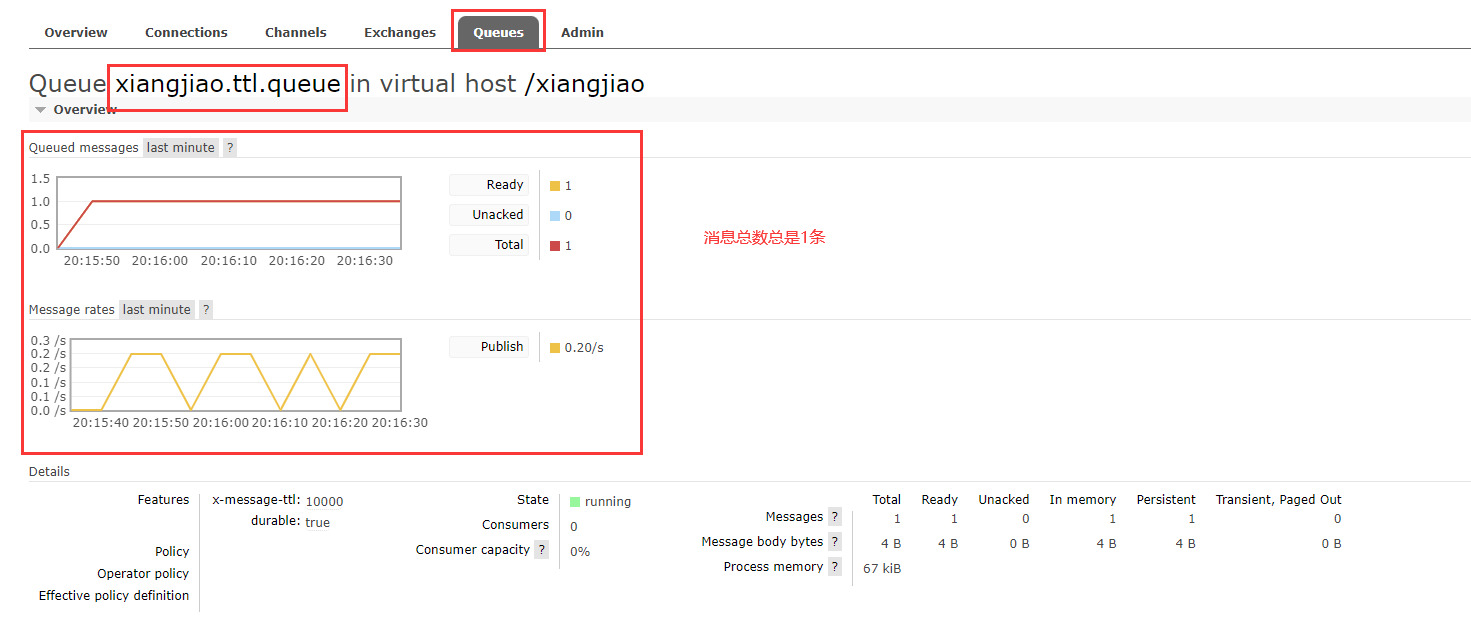

查看控制台输出日志:
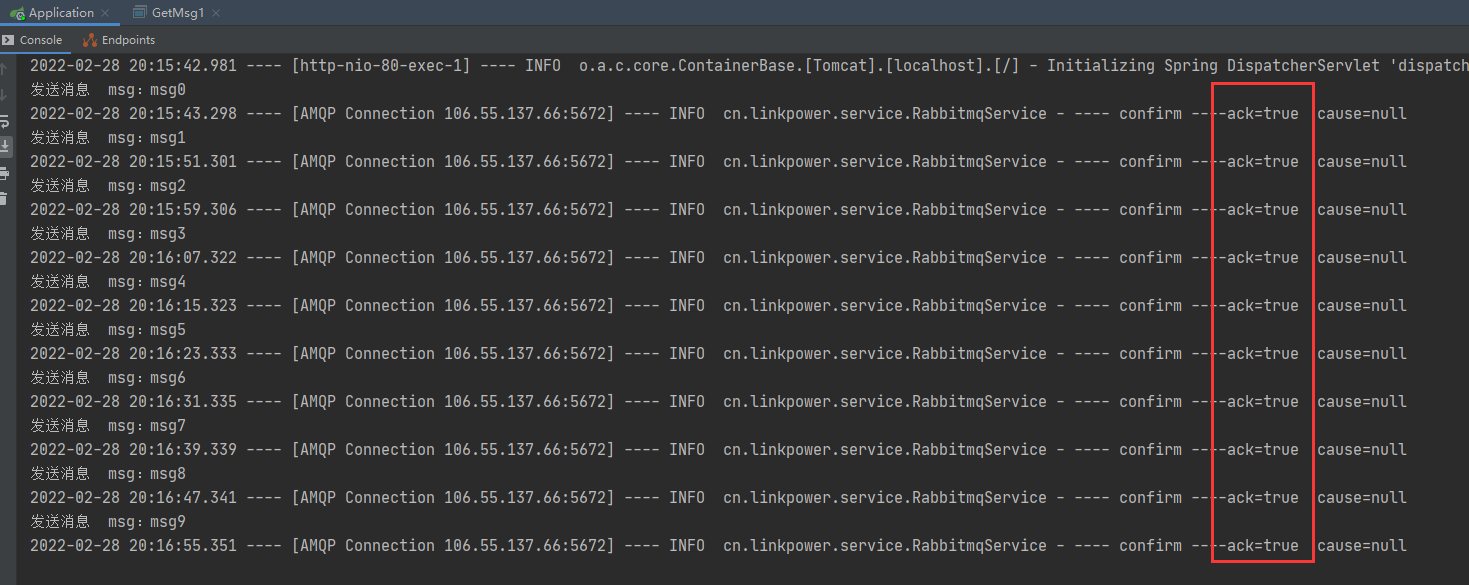
消息正常发送到了Exchange,同时Exchange 也将消息推送到了指定的队列 !
设置有
Confirm和Return监听。
【说明:】
给队列设定时间后,单位时间内的消息如果未被消费,则队列会将其中的数据进行删除处理。
对单个消息设定过期时间
上面的操作和测试,已经验证对队列设定过期时间,会导致所有的消息过期时间都是一样的现象。
但实际开发中,可能一个队列需要存放不同过期时间的消息信息,如果需要进行实现,就不能再设定队列的过期时间信息了,需要采取下面要说到的针对单个消息,设置不同过期时间。
配置
既然是针对单个消息设定不同的过期时间操作,则需要去掉队列过期设置。
为了测试的简单化,此处采取直连 Direct 交换机类型,进行交换机和队列数据的绑定方式。如下所示:
// =========================== Direct 直连模式 ==================================
//队列名称
public static final String QUEUQ_NAME = "xiangjiao.queue";
//交换器名称
public static final String EXCHANGE = "xiangjiao.exchange";
//路由key
public static final String ROUTING_KEY = "xiangjiao.routingKey";
// =========================== Direct 普通队列申明 和 交换机绑定 ===================
//创建队列
@Bean(value = "getQueue")
public Queue getQueue(){
//QueueBuilder.durable(QUEUQ_NAME).build();
return new Queue(QUEUQ_NAME);
}
//实例化交换机
@Bean(value = "getDirectExchange")
public DirectExchange getDirectExchange(){
//DirectExchange(String name, boolean durable, boolean autoDelete)
/**
* 参数一:交换机名称;<br>
* 参数二:是否永久;<br>
* 参数三:是否自动删除;<br>
*/
//ExchangeBuilder.directExchange(EXCHANGE).durable(true).build();
return new DirectExchange(EXCHANGE, true, false);
}
//绑定消息队列和交换机
@Bean
public Binding bindExchangeAndQueue(@Qualifier(value = "getDirectExchange") DirectExchange exchange,
@Qualifier(value = "getQueue") Queue queue){
return BindingBuilder.bind(queue).to(exchange).with(ROUTING_KEY);
}
对于消息的发送,依旧沿用之前写的发送处理方式
设定
confirm和return监听,保证消息能够正常到达指定的队列中。
测试
编写一个测试的接口,设定单个消息的过期时间属性,保证不同消息具备不同的过期时间。
在之前博客中,针对消息的持久化设置,需要保证消息向队列设定属性时,传递一个deliveryMode参数值信息。
同理,设定每个消息的过期时间,也需要设定对应的属性信息。如下所示:
/**
* 发送消息,指定ttl参数信息(单个消息);
* 测试需要将消息消费者关闭监听
* @return
*/
@RequestMapping("/sendTtl")
@ResponseBody
public String sendTtl(){
//发送10条消息
for (int i = 0; i < 10; i++) {
String msg = "msg"+i;
System.out.println("发送消息 msg:"+msg);
MessageProperties messageProperties = new MessageProperties();
messageProperties.setExpiration("5000"); // 针对消息设定时限
// 将消息数据和设置属性进行封装,采取消息发送模板,将消息数据推送至指定的交换机 exchange 中
Message message = new Message(msg.getBytes(), messageProperties);
rabbitmqService.sendMessage(MQConfiguration.EXCHANGE, MQConfiguration.ROUTING_KEY,message);
//每两秒发送一次
try {
Thread.sleep(3000);
} catch (InterruptedException e) {
e.printStackTrace();
}
}
return "send ok";
}
上面代码的编写核心为将消息内容体和消息对象属性进行封装。
MessageProperties messageProperties = new MessageProperties();
messageProperties.setExpiration("5000"); // 针对消息设定时限
// 将消息数据和设置属性进行封装,采取消息发送模板,将消息数据推送至指定的交换机 exchange 中
Message message = new Message(msg.getBytes(), messageProperties);
引申一点:消息的持久化
Springboot 2.x ——RabbitTemplate为什么会默认消息持久化?
请求连接进行测试:
http://localhost/sendTtl
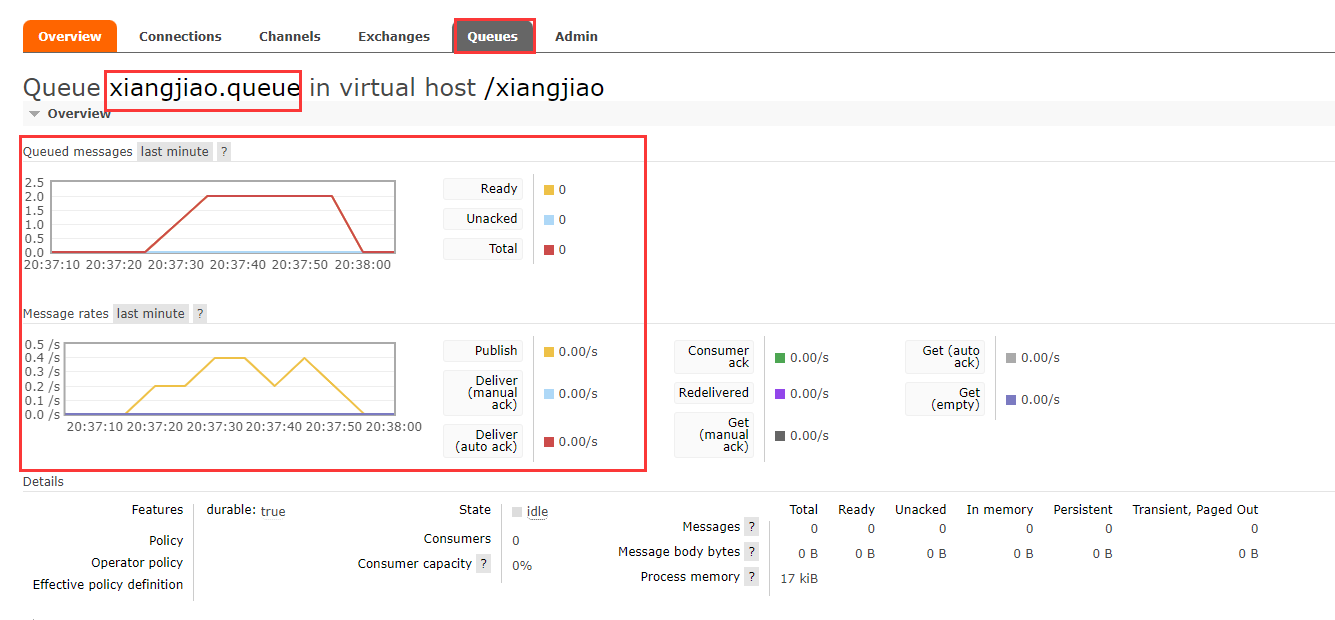
查看控制台打印日志情况:
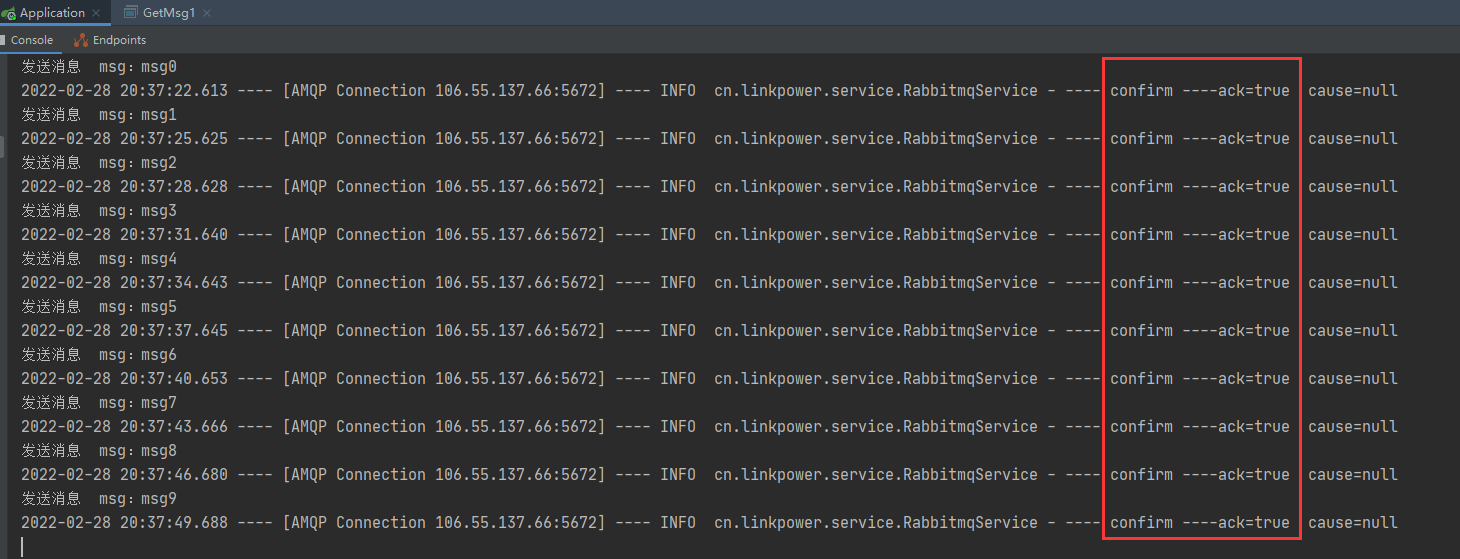
总结
1、设置队列过期时间使用参数:x-message-ttl,单位:ms(毫秒),会对整个队列消息统一过期。
2、设置消息过期时间使用参数:expiration。单位:ms(毫秒),当该消息在队列头部时(消费时),会单独判断这一消息是否过期。
3、如果两者都进行了设置,以时间短的为准。
代码下载
加载全部内容